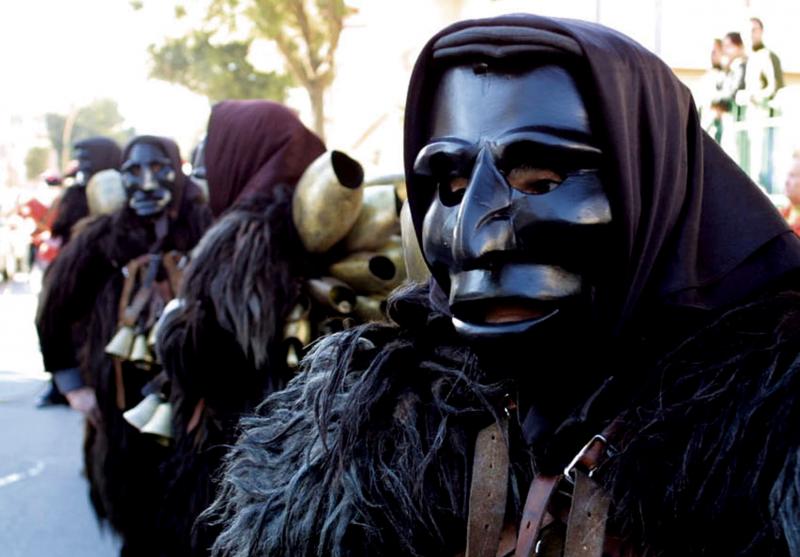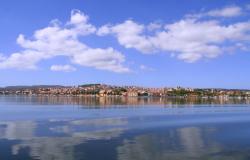Forget all you know about Italian Carnival—streamers, confetti, costumes, floats and carefree merrymaking. Mamoiada is different. This Carnival, which some locals believe to be more than 3000 years old, harks back to propitiatory pre-Christian rites get rid of evil spirits and bring prosperity to the community.
The festival always starts on January 17, the day of Saint Anthony the Great. The people of Mamoiada take to the main square, where they dance the traditional su passu torràu, su sàrtiu and su dillu.
They keep dancing all the way to Shrove Tuesday except when, suddenly, the jingling of hundreds of bells echoes through the village. Then the dancers stop and wait because it means the Mamuthones, the true core of Mamoiada’s Carnival, are arriving.
Twelve Mamuthones—men clad in black sheepskin, brown wimples, and disquieting wooden masks, with a calf’s weight in cowbells on their backs—dance rhythmically on two parallel lines along the mural-encrusted streets. They are protected by a ring of eight Issohadores, men dressed in bright red and white and armed with the soha, a crossover between a lasso and a whip.
Every now and again, the Issohadores break rank and ‘capture’ a man or, more often, a woman from the watching crowd. Tradition has it that the captive has to buy everyone a drink to gain his or her freedom.
On the last Monday of Carnival, the children carry on the rite themselves, with the tiny mamuthoneddos and issohadoreddos replacing the grown-ups. Come Shrove Tuesday, Carnival ends, with the last parade and the death of Juvanne Martis Sero, Mamoiada’s only float. A dummy is placed on a cart and taken around the village streets, accompanied by men and women who sing their sorrow for his death. At the end of the procession, and the festivities, people eat pork and broad beans stew and biscuits in the streets, served with a potent red wine of local production.








